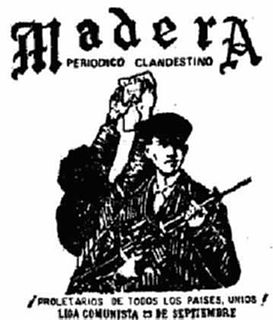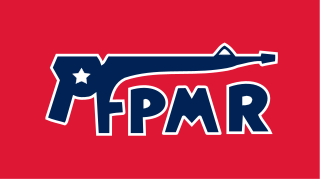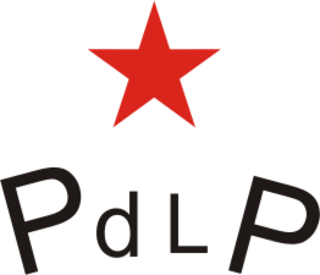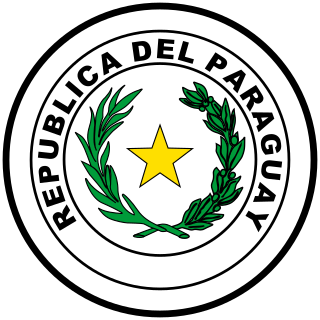 W
WThe 26th of July Movement was a Cuban vanguard revolutionary organization and later a political party led by Fidel Castro. The movement's name commemorates its 26th July 1953 attack on the army barracks on Santiago de Cuba in an attempt to start the overthrowing of the dictator Fulgencio Batista.
 W
W¡Alfaro Vive, Carajo! (AVC), another name for the Fuerzas Armadas Populares Eloy Alfaro, was a clandestine left-wing group in Ecuador, founded in 1982 and named after popular government leader and general Eloy Alfaro.
 W
WThe Armed Peasant Association is a far-left rebel group that takes part in the insurgency in Paraguay. Formed in 2014 as splinter faction of the Paraguayan People's Army (EPP) by two brothers, Albino and Alfredo Jara Larrea, ACA began to decline almost immediately after its foundation as result of repeated raids and arrests by the Paraguayan security forces. After the death of most of its members and leaders in 2016, the group became defunct. It was refounded in 2017, however, by two sisters of the Jara Larrea brothers and a former member of the "Army of Marshal López", another insurgent group.
 W
WThe Bolivarian Forces of Liberation is a communist guerrilla organization operating in Venezuela. The group claims to fight for Bolivarianism, a left-wing, South American ideology. The group was formerly known as the Bolivarian Forces of Liberation – Liberation Army, but they have not attached the suffix to their name in recent years.
 W
WThe Ethnocacerist movement is a Peruvian ethnic nationalist movement seeking the establishment of a proletarian dictatorship led by the country's indigenous communities and their descendants. It combines far-left economic views with far-right views on racial, social, and military issues.
 W
WLas Fuerzas Armadas de la Resistencia Nacional was the military arm of National Resistance, a Salvadoran communist organization that was founded on May 10, 1975 when ideological differences within the ERP and the assassinations of Roque Dalton and Armando Arteaga made some members break away from the ERP. Ernesto Jovel was its first general secretary. Other founding members of the RN included Eduardo Sancho, Lil Milagro Ramírez, Julia Rodríguez and Arsenio.
The Fuerzas Armadas de Liberación Nacional was a Puerto Rican clandestine paramilitary organization that, through direct action, advocated complete independence for Puerto Rico. It carried out more than 130 bomb attacks in the United States between 1974 and 1983, including a 1975 bombing of the Fraunces Tavern in New York City that killed four people.
 W
WThe Fuerzas Populares de Liberación "Farabundo Martí" (FPL) was a left wing guerrilla military and political organization in El Salvador. It was the oldest of the five groups who in 1980, merged to form the Frente Farabundo Martí para la Liberación Nacional (FMLN).
 W
WThe Guatemalan Party of Labour was a communist party in Guatemala. It existed from 1949 to 1998. It gained prominence during the government of Col. Jacobo Arbenz. It was one of the main forces of opposition to the various regimes that followed Arbenz's overthrow and became a constituent of the URNG guerrilla coalition during the later phase of the country's Civil War.
 W
WThe Lautaro Youth Movement also known as MAPU Lautaro was a left-wing armed organization in Chile, founded in 1982 by Guillermo Ossandón.
 W
WThe Liberation Army of the South was a guerrilla force led for most of its existence by Emiliano Zapata that took part in the Mexican Revolution from 1911 to 1920. During that time, the Zapatistas fought against the national governments of Porfirio Díaz, Francisco Madero, Victoriano Huerta, and Venustiano Carranza. Their goal was rural land reform, specifically reclaiming communal lands stolen by hacendados in the period before the revolution. Although rarely active outside their base in Morelos, they allied with Pancho Villa to support the Conventionists against the Carrancistas. After Villa's defeat, the Zapatistas remained in open rebellion. It was only after Zapata's 1919 assassination and the overthrow of the Carranza government that Zapata's successor, Gildardo Magaña, negotiated peace with President Álvaro Obregón.
 W
WThe Liga Comunista 23 de Septiembre, or LC23S, was a Marxist-Leninist urban guerrilla movement that emerged in Mexico in the early 1970s. The result of the merging of various armed revolutionary organizations active in Mexico prior to 1974, with the objective of creating a united front to combat the Mexican government; the name was chosen to commemorate an unsuccessful guerrilla assault on the barracks of Ciudad Madera in the northern state of Chihuahua led by former schoolteacher Arturo Gámiz and the People's Guerrilla Group on September 23, 1965. The LC23S' militancy was made up mainly of young disenfranchised university students who saw any opportunity of a peaceful political transformation die in the aftermath of the 1968 student movement and then to be buried in the violent crackdown of 1971. Its long term objective was the “elimination of the capitalist system and bourgeois democracy, which would be replaced by a socialist republic and the dictatorship of the proletariat”.
 W
WThe Manuel Rodríguez Patriotic Front, was a Chilean revolutionary and Marxist-Leninist guerrilla organisation officially founded on 14 December 1983 as the paramilitary arm of the Communist Party of Chile (CPCh) in the context of this party policy denominated as the "Política de Rebelión Popular de Masas", created with the goal of a violent overthrow of the civic-military dictatorship of general Augusto Pinochet.
 W
WThe Paraguayan People’s Army is a communist guerrilla movement that has staged a number of armed operations, including bombings, arson attacks, shootings and kidnappings as part of an organized insurgency. They operate in northern Paraguay, with most incidents occurring in Concepción Department, as well as the neighboring departments of Canindeyú and San Pedro. The EPP are believed to number 50-80 members.
 W
WThe Party of the Poor was a left-wing political movement and militant group in Mexico operating between 1967 and 1974. Led by the rural schoolteacher Lucio Cabañas, the PdlP – through its armed wing, the Peasants' Justice Brigade – waged guerrilla warfare against the Mexican government in the mountains of Guerrero.
 W
WThe People's Revolutionary Army was the military branch of the communist Partido Revolucionario de los Trabajadores in Argentina.
 W
WThe People's Revolutionary Army was one of five leftist guerrilla organizations that comprised the Farabundo Martí National Liberation Front (FMLN). Formed on October 10, 1980, the FMLN was one of the main participants in the Salvadoran Civil War (1979-1992).
 W
WThe People's Revolutionary Bloc was a Salvadoran militant organization that was founded by the Farabundo Martí Liberation People's Forces (FLP) in 1975. The BPR was mainly composed intellectuals, teachers, students, and rural peasants and workers. The group was lead by General-Secretary Julio Flores.
 W
WThe Popular Revolutionary Army or Ejército Popular Revolucionario is a leftist guerrilla movement in Mexico. Though it operates mainly in the state of Guerrero, it has also conducted operations in other southern-Mexico states, including Oaxaca, Chiapas, Guanajuato, Tlaxcala and Veracruz.
 W
WThe Rebel Armed Forces was a Guatemalan guerrilla organization established in 1961 and lasting until the peace agreements in 1996.
 W
WResistencia Nacional was a Salvadoran political party. It began as a revolutionary organization founded on March 10, 1975 which became part of the FMLN coalition in 1980, against the military junta in the Salvadoran Civil War.
 W
WThe Revolutionary Left Movement is a Chilean far-left political organization and former urban guerrilla organization founded on October 12, 1965. At its height in 1973, the MIR numbered about 10,000 members and associates. The group emerged from various student organizations, mainly from University of Concepción, that had originally been active in the youth organization of the Socialist Party. They established a base of support among the trade unions and shantytowns of Concepción, Santiago, and other cities. Andrés Pascal Allende, a nephew of Salvador Allende, president of Chile from 1970 to 1973, was one of its early leaders. Miguel Enríquez Espinosa was the General Secretary of the party from 1967 until his assassination in 1974 by the DINA.
 W
WThe Revolutionary Left Movement was a Marxist group founded in Peru in 1962 by Luis de la Puente Uceda and his group APRA Rebelde, a splinter group from the APRA which had rallied the government in the 1950s and 1960s. Inspired by the Cuban Revolution and close to a non-aligned position which opposed itself to the Communist Party of Peru, the Soviet Union and China, the group initiated guerrilla actions against the government in 1965. After its leader's death at the end of 1965, the MIR split into three different factions. One of them, the MIR-EM, merged with the Revolutionary Socialist Party (Marxist-Leninist) in 1982 to create the Movimiento Revolucionario Túpac Amaru (MRTA). The two others factions, MIR-VR and MIR-IV, joined the parliamentary left-wing coalition Izquierda Unida in the early 1980s.
 W
WRevolutionary Movement 13th November was a leftist movement in Guatemala. MR-13 was founded in 1960 by a group of dissident officers. It grew partly out of the popular protests against the government of President Miguel Ydígoras Fuentes following his election in 1958. It was led by Luis Augusto Turcios Lima, Marco Antonio Yon Sosa and Luis Trejo Esquivel. Alejandro de León, co-founder of the group, was captured and shot by the judicial police in 1961. In 1963, MR-13 joined the Rebel Armed Forces (FAR).
 W
WRevolutionary Organization of the People in Arms (ORPA)(Spanish: Organización Revolucionario del Pueblo en Armas) was one of the four groups of armed resistance during the Guatemalan Civil War.
 W
WThe Movimiento Nacionalista Tacuara was an Argentine far right fascist movement from 1955 through the 1960s, and in the years 1960-6, as Neo Nazis, which later integrated Juan Perón's right-wing “Special Formations”. Linked to the more conservative sectors of the Peronist movement, and directly inspired by Julio Meinvielle's Catholic pronouncements, Tacuara defended nationalist, Catholic, anti-liberal, anti-communist, antisemitic and anti-democratic ideas, and had as its first model the Spaniard Primo de Rivera's fascist Falange. Its main leaders were Alberto Ezcurra Medrano, Pro-Nazi and admirer of Hitler & Mussolini Joe Baxter, Oscar Denovi and Eduardo Rosa. Various ideologically contradictory movements emerged from this group. After three important splits in the early 1960s, the police cracked down on most factions in March 1964. A year later, the entire MNT was outlawed by President Arturo Illia (UCR). Composed of young people from right-wing backgrounds, it has been called the "first urban guerrilla group in Argentina".
 W
WThe Túpac Amaru Revolutionary Movement was a Peruvian Marxist guerrilla group which started in the early 1980s. Their self-declared goal was to demonstrate to leftist groups in Peru that sought change through the current government the viability of radical revolution. The MRTA also aimed to provide an alternative to the more radical militant group, the Shining Path, which placed them in direct competition with the Shining Path. The group was led by Víctor Polay Campos until he was sentenced to 32 years' imprisonment in 1992 and by Néstor Cerpa Cartolini until his death in 1997.
 W
WTupamaros, also known as the MLN-T, was a left-wing urban guerrilla group in Uruguay in the 1960s and 1970s. The MLN-T is inextricably linked to its most important leader, Raúl Sendic, and his brand of social politics. José Mujica, who later became president of Uruguay, was also a member. In their low-level insurgency against the Uruguayan government, the Tupamaros killed 50 soldiers, policemen and also civilians. 300 Tupamaros died either in action or in prisons, according to officials of the group. About 3,000 Tupamaros were also imprisoned.
 W
WUnited National Liberation Front was a guerrilla movement controlled by the Paraguayan Communist Party that fought against the regime of dictator Alfredo Stroessner. FULNA was founded in 1960 though by the end of the decade the movement was virtually eradicated by the Paraguayan military with its leaders and members either arrested, executed, imprisoned, tortured, or killed in action. One unit, Columna Mariscal López, continued to exist until the 1970s, when it was finally eradicated.
 W
WZarate Willka Armed Forces of Liberation was a Bolivian guerrilla terrorist group which was organized about 1985 and surfaced with a series of bombings, assassinations, and attempted assassinations in La Paz, Bolivia, during 1988 and 1989.